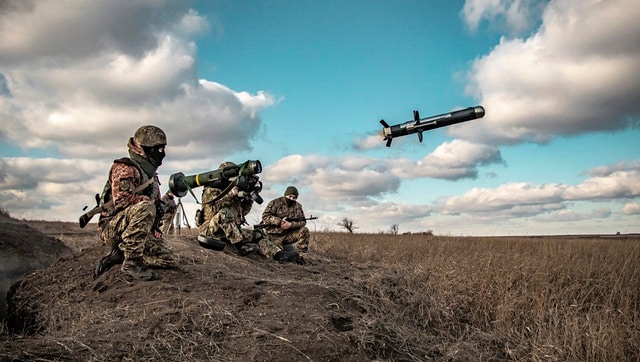Tensions between China and Taiwan continue to rise after US House Speaker Nancy Pelosi’s visit. On Friday Taipei’s military said 68 Chinese fighter jets and 13 warships crossed the “median line” that runs down the Taiwan Strait during Friday’s military drills by Beijing’s forces. Meanwhile, Beijing said it was ending cooperation with the United States on a slew of key issues including climate change, anti-drug efforts and military talks and the White House summoned China’s ambassador to Washington to condemn the “irresponsible” behaviour of Beijing. But the question on everyone’s minds remains the same – how will Taipei defend itself if China, which has vowed one day to take Taiwan ‘by force if necessary’ actually decides to follow through on its threat? This is a question Taiwan, which cannot hope to match China’s military might and which has lived with the constant threat of Beijing for decades (now only heightened by Russia’s invasion of Ukraine) has carefully considered. The answer? The ‘porcupine strategy’ (also known as asymmetrical warfare). But what is it? How does it work? Let’s take a closer look: What is it? As per Indian Express, the “porcupine doctrine” was proposed in 2008 by US Naval War College research professor William S Murray. It focuses on fortifying a weak state’s defences to exploit the enemy’s weaknesses rather than taking on its strengths. It is about building defences that would ensure that Taiwan “could be attacked and damaged but not defeated, at least without unacceptably high costs and risks”, Murray wrote in the Naval War College Review. Simply put, the aim of the strategy is to make Taiwan’s defence so secure it imposes a ruinous cost on any potential invader. When was it adopted? How does it work? As per Indiatimes, it was adopted by Taiwan in 2017 when Lee Hsi-Ming, then-chief of the Taiwanese military forces, referred to it as the “Overall Defence Concept” (ODC). The strategy, describe as a “large numbers of small things" by senior US defence official David F Helvey to The New York Times, has helped Ukraine resist the Russian invasion. Rather than focusing on buying tanks, warships, and naval vessels at eye-watering costs – all which are difficult to conceal and easy to hit with a warhead – the ‘porcupine strategy’ instead opts for flexible and easily concealed weapons such as the portable Javelin and Stinger missile systems (which Ukranians have used to wreak havoc against Russian forces), as per Indiatimes. [caption id=“attachment_10671181” align=“alignnone” width=“640”]  In this image released by Ukrainian Defence Ministry Press Service, Ukrainian soldiers use a launcher with US Javelin missiles during military exercises in Donetsk region, Ukraine, 23 December, 2021. AP[/caption] As per Telegraph, Taiwan has purchased large inventories of anti-air, anti-tank, and anti-ship weapons and ammunition including unmanned aerial vehicles (UAVs) and low-cost munitions like mobile coastal defence cruise missiles (CDCMs), which have the capacity to destroy China’s expensive naval vessels and naval equipment. Taipei has also bought stealth fast-attack crafts and miniature missile assault boats which are relatively inexpensive but highly effective. They can be dispersed among fishing boats across Taiwan’s ports. Sea mines and fast mine-laying ships could also complicate the landing operations of any invading navy, as per the report. Multi-layered defence As per DW, China’s People’s Liberation Army would need to transport a lot of soldiers and massive amount of supplies including armoured vehicles, weapons, ammunition, food, medical supplies and fuel across the strait. This is only possible by sea, since airlifts and fleets of planes have limited capacity. Taiwan’s territory includes a chain of Islands, some of them near Chinese shores. Monitoring equipment installed on those islands can detect the first fleet departing from China’s coasts. That is supposed to give the Taiwanese forces enough time to coordinate a multi-layered defence, as per the report. Sea mines, combined with fast-attack craft and missile assault boats, along with land-based munitions positioned on shores and nearby islands, would confront the PLA in its most vulnerable state, before it gets a chance to land and start an operation. Taiwan is also preparing for guerrilla warfare in case the PLA succeeds in getting boots on the ground. Man-portable air-defence systems (MANPADS) and mobile anti-armour weapons, such as high mobility artillery rocket systems (HIMARS), can be used in urban fights, while buildings can be turned into barracks, as per the report.
But it’s not been smooth sailing.
As per The New York Times, while President Tsai Ing-wen of Taiwan has expressed support for the so-called “asymmetric” strategy and has tried to increase the defence budget and buy many of the small, mobile weapons that US officials have recommended, she has encountered resistance at times from some Taiwanese military officials. They contend that that some conventional weapons systems are still necessary and that it would be too risky for Taiwan to abandon those without an explicit security guarantee from the United States. A source close to Taiwan’s Ministry of National Defence told the Financial Times last year, “If we only train how to flee and hide, that will shake morale. If we give up on developing our air force, the PLA will win before the war has even started.” Can a Chinese invasion succeed? Maybe. But there are risks. “Any near-term PLA invasion would remain a high-risk option. Such an operation would rely on the success of the PLA’s more developed cyberattack, missile strike, and blockade capabilities to sufficiently degrade, isolate, or defeat Taiwan’s defending forces as well as its anti-access and area denial capabilities to prevent decisive US intervention,” the US-China Economic and Security Review Commission report said, as per Indian Express. With inputs from agencies With inputs from agencies Read all the Latest News , Trending News , Cricket News , Bollywood News , India News and Entertainment News here. Follow us on Facebook, Twitter and Instagram.


)

)
)
)
)
)
)
)
)



